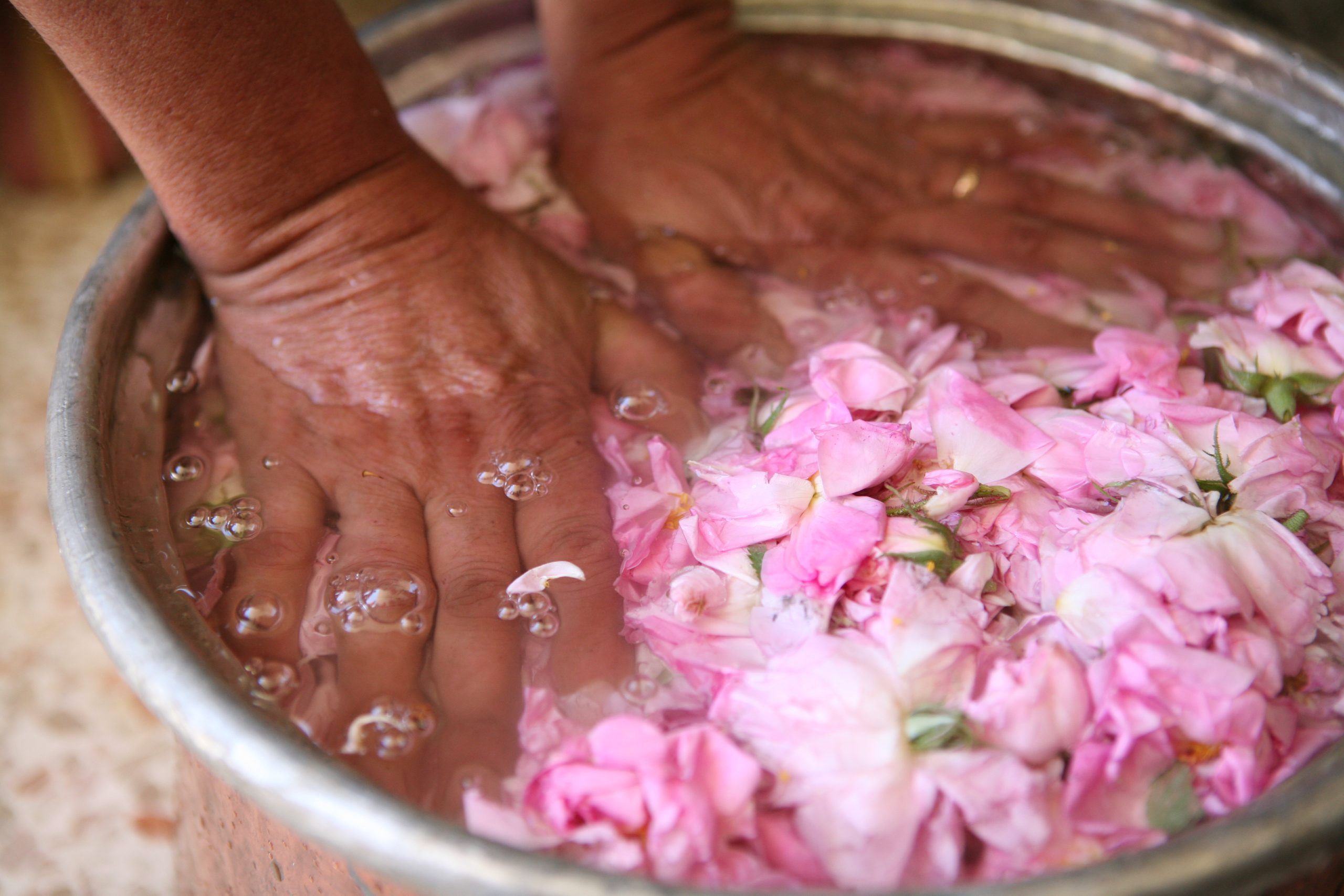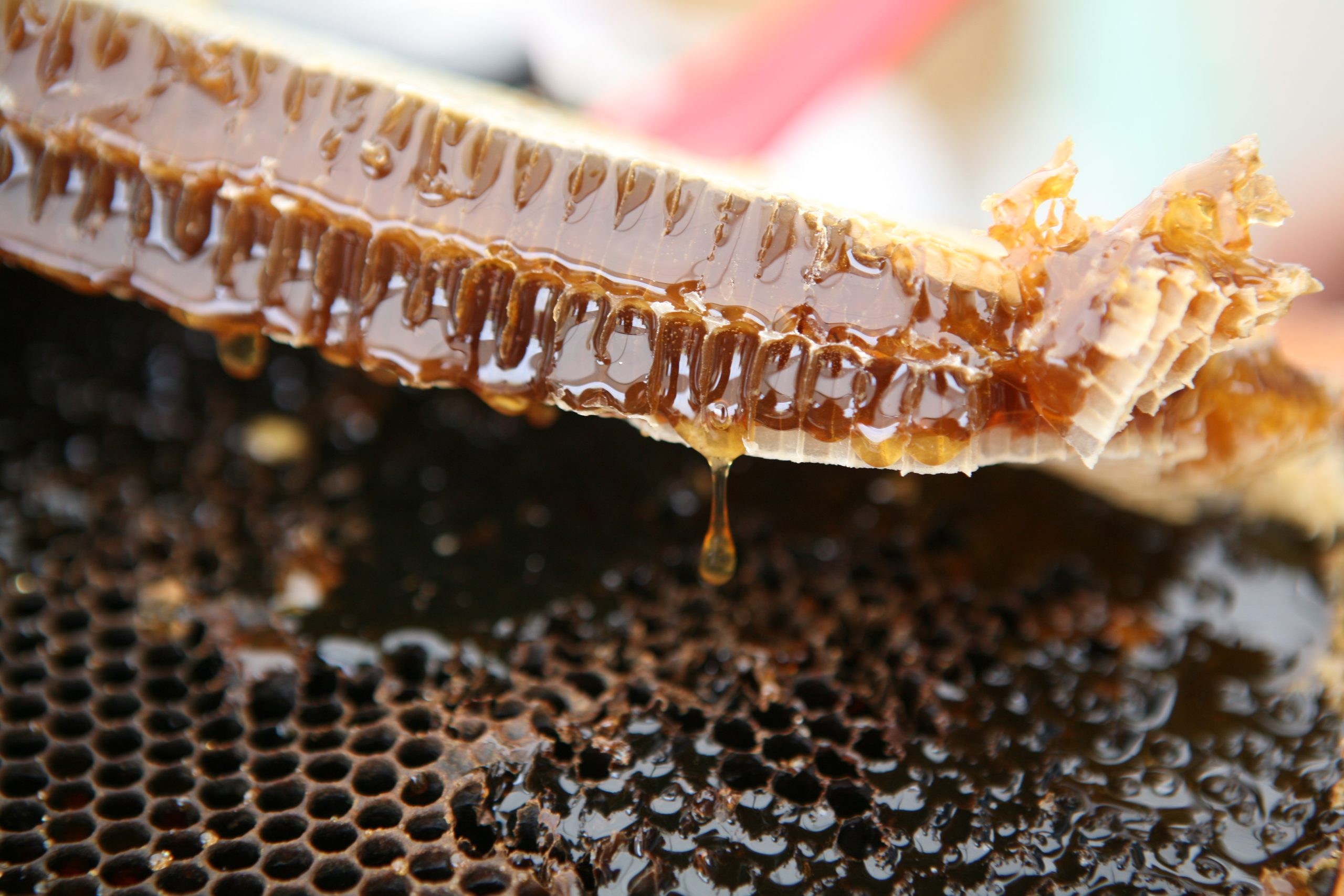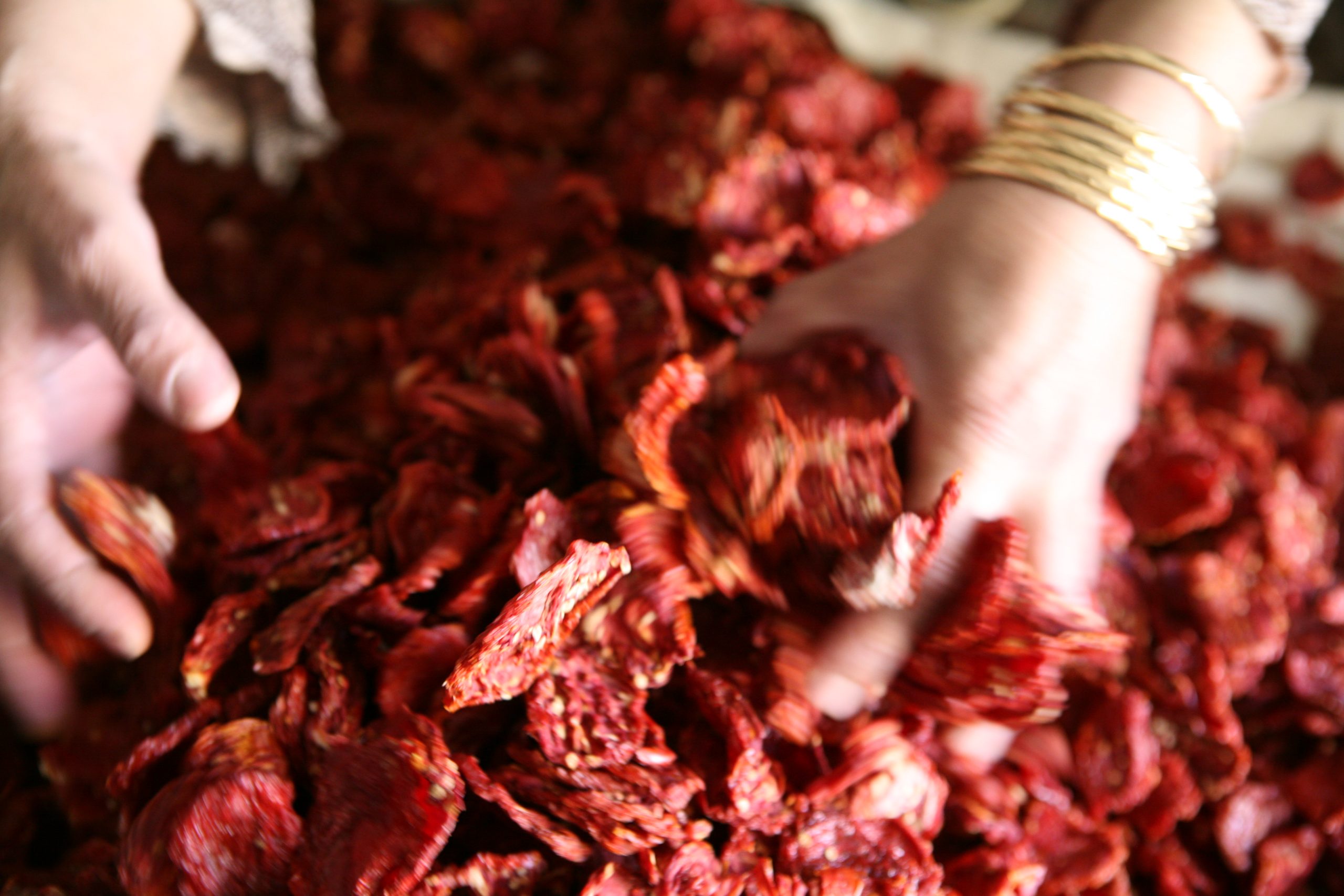Food writer Barbara Abdeni Massaad explores Mouneh, the traditional Lebanese practice of preserving food, and why it still matters today.

Photo – Barbara Abdeni Massaad
What is Mouneh?
The word mouneh comes from the Arabic mana, “to store.” For centuries, villagers across Lebanon prepared it during harvest season. Fruits, vegetables, herbs, and animal products were transformed into foods that could last through winter — usually up to a year.
Why It Still Matters
Supermarkets may stock produce year-round, but many Lebanese families continue to make mouneh. Farmers use it to reduce waste. Families turn to it for food security in uncertain times. For others, it’s about keeping a family ritual alive — and holding onto a piece of heritage.

Photo – Barbara Abdeni Massaad
The Many Faces of Mouneh
Fruits take center stage with jams, marmalades, syrups, and molasses that capture summer sweetness in a jar. Vegetables, on the other hand, are preserved through pickling, drying, or being carefully layered in olive oil.
No Lebanese pantry is complete without olives and olive oil, which are pressed and stored away from light to last an entire year. Herbs and wild plants, foraged in spring and summer, are dried and sometimes ground, filling kitchens with their distinctive aromas.
Meat preservation was once essential, most famously in the form of “awarma” — meat cooked slowly in fat. While no longer a necessity, its rich flavor remains beloved, especially with eggs or in stews. Dairy also found its way into mouneh, with milk transformed into cheeses and yogurts using age-old techniques designed to outlast the seasons.
Grains and bread play an equally important role. Wheat is ground into burghul of varying textures, used in Lebanese staples like tabbouleh and kibbeh, while thin saj bread continues to be a mountain tradition. Nuts and seeds, from sesame to pine nuts, are gathered and stored for use in both savory and sweet dishes.
Finally, distillation brings a fragrant note to the practice. Families prepare orange blossom water in April, rose water in May, and finish the summer with grape-based arak, Lebanon’s national drink.

Photo – Barbara Abdeni Massaad
A Seasonal Tradition
Each season brings its own flavors to the pantry. Spring is marked by pickled cabbage, loquats, strawberries, artichokes, and green almonds. Summer overflows with apricots, cherries, grape leaves, mint, mulberries, and zucchini. Autumn delivers apples, figs, olives, walnuts, and pomegranates. And in winter, citrus fruits, turnips, pumpkin, and quince brighten the darker months.
More Than Storage
Mouneh is not just about food. It is memory, resilience, and sustainability in practice. In an age of imported produce and industrial farming, mouneh stands as a reminder of Lebanon’s deep connection to the land — a tradition that continues to nourish both body and soul.
If you enjoyed reading this check out our article on special places to buy mouneh.
Loading
